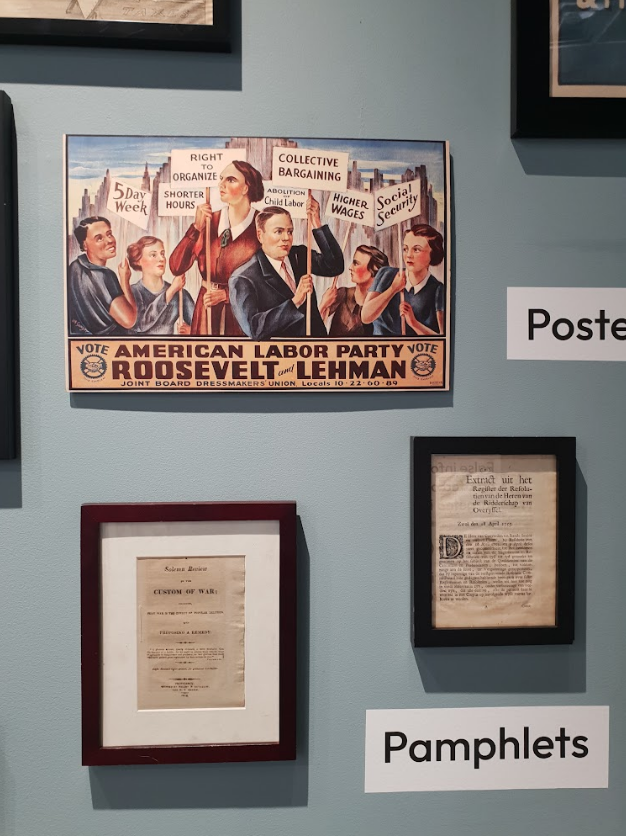Visitors to Dayton’s International Peace Museum are being educated on the darkside of mass media courtesy of a new exhibition. At its sleek venue in downtown, the museum’s expertly assembled displays detail the origins of the ‘Disinformation Age’ we are currently experiencing, showing the dangers of what can happen when technology falls into the wrong hands.
Few topics have been as hotly debared in recent years as the surge and spread of inaccurate information on mass media platforms. A plague throughout social media and the world of political advertising, it seems as though every passing week brings with it a new conspiracy being peddled as truth. In an age of deep fakes, vocal manipulation, and partisan politics, the latest bevy of propaganda and fake news is usually a click away.
What makes the peace museum’s exhibition stand out is how it illustrates the origins of disinformation. A throughline can be drawn, as highlighted by the exhibit’s displays, from the mass-produced pamphlets of 17th century zealots to memes stoking the flames of division in 2023. In the words of the museum’s Executive Director Kevin Kelly, the invention of cheaper methods of sharing messages remains a prime driver for the spread of information, even the inaccurate kind.

Kelly told The Clarion, “The first thing we do is clarify what is the difference between disinformation and misinformation. Disinformation is intentional, someone putting something out there they know is not correct, but they are spreading it to convince or influence other people. Misinformation is not intentional, people unknowingly sharing the wrong information. Usually it’s something they think is true. Despite being well-intentioned, misinformation can still be destructive.”
From one wall to another, visitors are taken on a walk through the history of mass media. Slogans and symbols that were popular during the world wars in addition to political or prejudicial ads showcase the many different flavors of disinformation and propaganda over the years.

“When I grew up, there were three nightly newscasts in the time before cable. Everything we heard we thought was vetted by professionals and true. Now, anyone can go online and be exposed to disinformation. From that perspective, older people are more susceptible. They can look at an image that has been manipulated by software and not realize no it, whereas younger people who grew up with that technology know it is nonsense,” Kelly added.
The exhibition ends with memes, the natural successor to the disinformation and propaganda that was popular in the early 20th century.
As Kelly said, “Social media has taken up what other forms of media were doing. Memes are simply another element of that. Unlike other mediums, they are everywhere, they are right there in the palm of your hand.”
Ismael David Mujahid.
Managing Editor.


